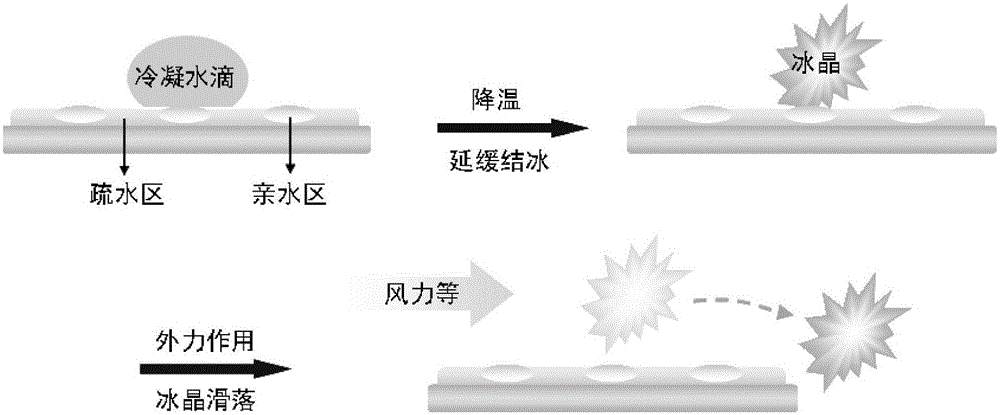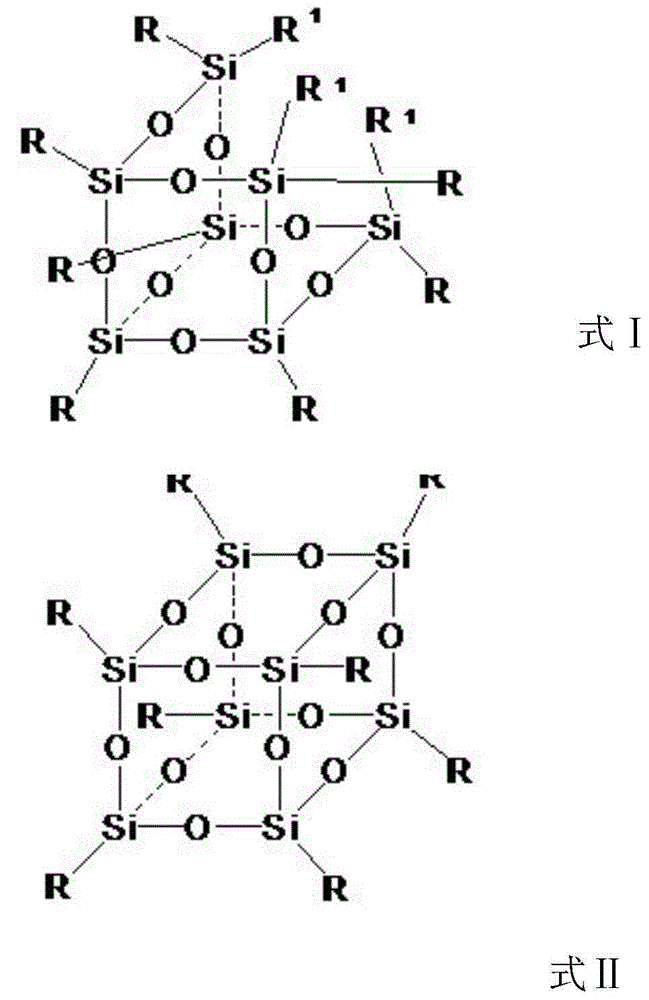Amphiphilic anti-freeze molecule based on silsesquioxane, preparation method thereof and anti-icing surface material
A technology of silsesquioxane and anti-freeze molecules, applied in the field of anti-icing surface materials, can solve the problems of unstable anti-icing effect of anti-icing surface materials, etc.
- Summary
- Abstract
- Description
- Claims
- Application Information
AI Technical Summary
Problems solved by technology
Method used
Image
Examples
preparation example Construction
[0043] The present invention also provides a preparation method of amphiphilic antifreeze molecules based on silsesquioxane, comprising:
[0044] Step 1: preparing silsesquioxane with reactive groups and hydrophobic groups;
[0045] Step 2: combining the silsesquioxane in step 1 with the antifreeze protein or antifreeze polypeptide through a coupling reaction to obtain an amphiphilic antifreeze molecule based on silsesquioxane.
[0046] According to the present invention, a silsesquioxane with a reactive group and a hydrophobic group is first prepared, the reactive group is preferably an amino group, a carboxyl group or a hydroxyl group, more preferably an amino group, and the hydrophobic group is preferably an iso Butyl or phenyl, etc., the structure of the silsesquioxane is preferably a ladder structure or a cage structure, the preparation method is a commonly used technical method in the art, without special restrictions, the reactive group is amino, the hydrophobic group ...
Embodiment 1
[0057] Step 1: Under reflux, add 50g of isobutyltrimethoxysilane dropwise to the solution containing 5gLiOH. h 2 O and 4ml of water in acetone / methanol (88 / 12) solution (250ml), the reaction was heated to 30°C, acidified by quenching in HCl, stirred for 2h, the resulting solid was filtered, washed and dried. Get 20g of gained solid and mix with 120ml absolute ethanol, fully stir, then 4.5g silane coupling agent γ-aminopropyltriethoxysilane and 0.4g tetraethylammonium hydroxide solution (20%) are slowly added dropwise to In the mixed solution, keep the system reacting at 20°C for 36 hours, evaporate the solvent, and filter and wash to obtain a cage silsesquioxane whose reactive group is amino and hydrophobic group is isobutyl;
[0058] Step 2: First select type I fish antifreeze protein (amino acid sequence: DTASDAAAAAALTAANAKAAAELTAANAAAAAAATAR), mix antifreeze protein and WangResin (molar ratio of antifreeze protein and WangResin 1:5), obtain antifreeze protein-WangResin, se...
Embodiment 2
[0060] Step 1: same as Step 1 in Example 1;
[0061] Step 2: Select the antifreeze polypeptide DTASDAAAAAAL, mix the antifreeze polypeptide and WangResin (the molar ratio of the antifreeze polypeptide and WangResin is 1:5), obtain the antifreeze polypeptide-WangResin, select HBTU and HOBT to activate the carboxyl group, and add the reactive group at the same time as Cage silsesquioxane with amino group and isobutyl hydrophobic group (the molar ratio of antifreeze polypeptide to silsesquioxane with amino reactive group and isobutyl hydrophobic group is 1:2) to react for 45 minutes , after the indene test is transparent, wash with DMF and methanol, use 20% DBLK solution to remove Fmoc (9-fluorenylmethoxycarbonyl, α-amino protecting group), and then wash with DMF, methanol, and dichloromethane in sequence, and the coupling is completed Finally, the resin was drained, cleaved with a classical lysate for 2 hours, and settled with glacial ether to obtain a crude product. The product...
PUM
 Login to View More
Login to View More Abstract
Description
Claims
Application Information
 Login to View More
Login to View More - R&D
- Intellectual Property
- Life Sciences
- Materials
- Tech Scout
- Unparalleled Data Quality
- Higher Quality Content
- 60% Fewer Hallucinations
Browse by: Latest US Patents, China's latest patents, Technical Efficacy Thesaurus, Application Domain, Technology Topic, Popular Technical Reports.
© 2025 PatSnap. All rights reserved.Legal|Privacy policy|Modern Slavery Act Transparency Statement|Sitemap|About US| Contact US: help@patsnap.com



